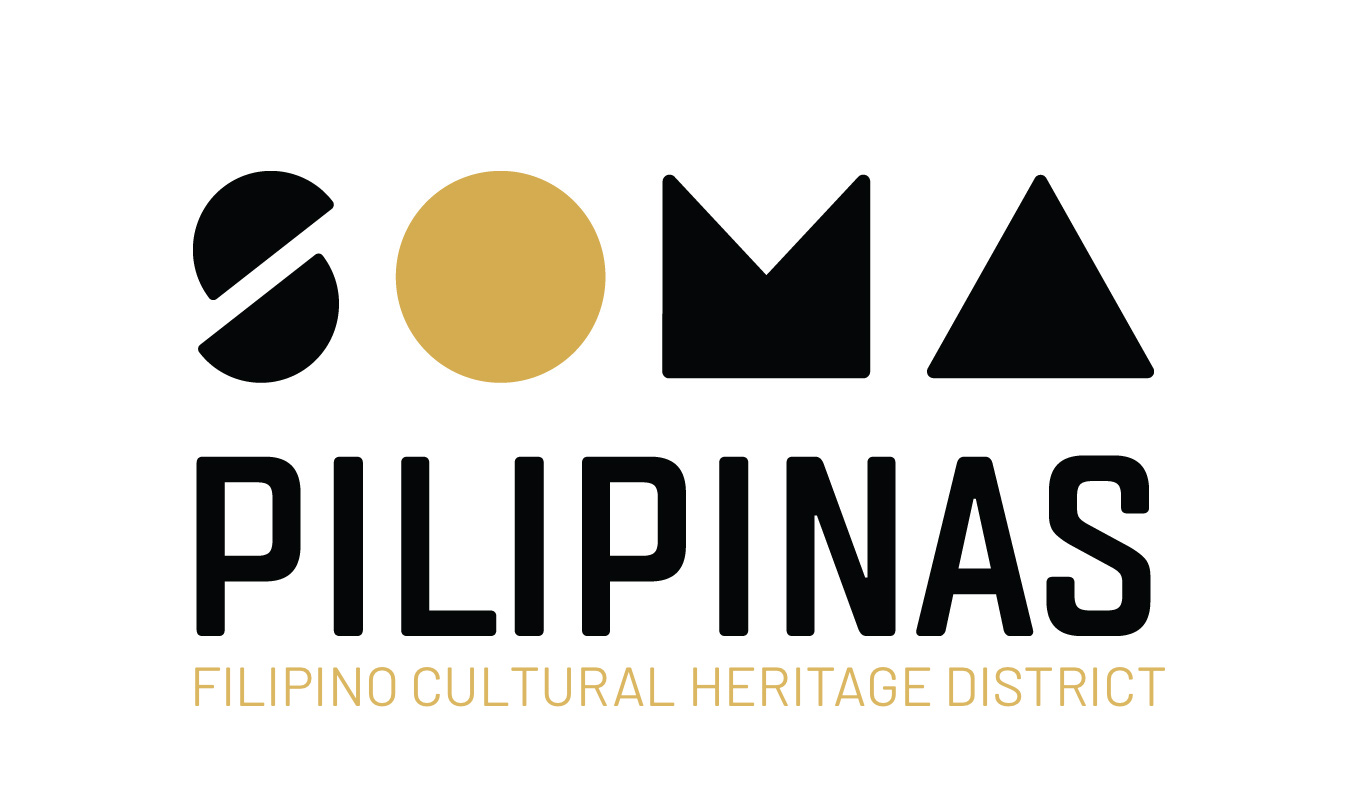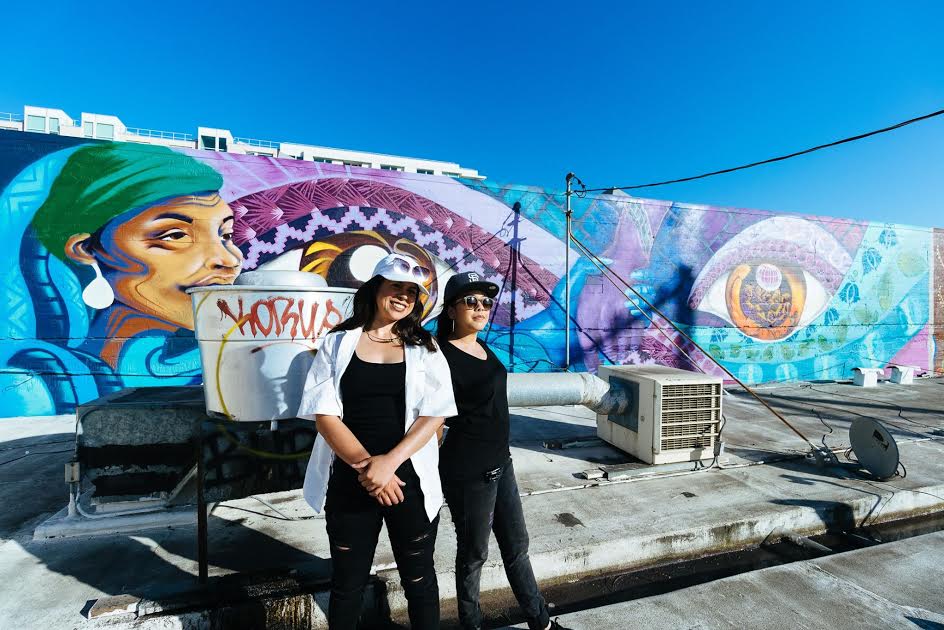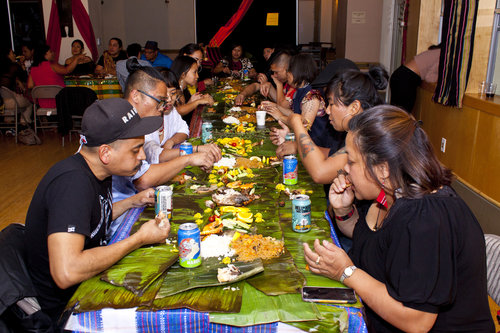"Filipino Stories from SOMA" at CAAMFEST!

On Wednesday, May 16 2018, CAAMFEST, SOMA Pilipinas, and Kularts SF present the debut screening of Alleluia Panis’ dance film She, Who Can See, based on her live dance theatre performance of the same title. Presented alongside She, Who Can See are the stunning community documents Borja Family Movies and Rico, SOMA Pinoy. This special evening of vibrant short films presents audiences the opportunity to gain a wide yet intimate understanding of the history, stories, and people that comprise Filipino life in San Francisco and the South of Market — a place rich in tradition and narratives that has recently been recognized by the State of California as the SOMA Pilipinas Filipino Cultural Heritage District.
With She, Who Can See, Alleluia Panis explores the vast potentialities of ancestral knowledge against a foreign cultural landscape. Inspired by the spiritual abilities and sustained relationship-building of people in her community, Alleluia’s work invigorates the discussion of selfhood and identity in a world nuanced by post-colonial angst, micro-aggressive cultural erasure, and the search for reverent connectivity to meaningful, familial legacies.
“The character of Salima is a composite of several friends who have the ability to communicate with spirits, entities, and energies — a ‘gift’ with enormous responsibility and overwhelming consequences. Often, Western contemporary society considers this a medical condition; however, Philippine indigenous cultures, as well as many other aboriginal cultures of the world, revere the ability to communicate with the ancients as a most precious and sacred gift. And the character of Nico honors the long-term partners of the friends this story is inspired by. Their love and support ground the ‘seer’ — and in the process, they also experience their own connection to the sacred mysteries,” Alleluia says.
Alleluia says that the piece is intended as a document and meditation on what she finds to be a common experience for many in the Filipino diaspora — an inward expedition of discovery, a reckoning with the long, painful past of a people, and the acceptance of the responsibilities that must be borne in order for the community to heal.
“I hope it’s a reflection of our experiences as Pilipino Americans, as Americans of Color, who are navigating and finding the harmony, the right balance of ancestral heritage and memory with our contemporary world. Our trauma of colonization remains until today; colonization and subjugation have vigorously attempted erasure of our indigenous spirituality, because Erasure and/or co-option of indigenous practices guarantees control and economic gain,” Alleluia says.
Screening alongside She, Who Can See on May 16 is Borja Family Home Movies, a curated presentation of the personal films of a family whose network was instrumental in developing the Bayanihan Community Center at 6th and Mission, and helped envision the SOMA Pilipinas Cultural Heritage District.
“My parents were both busy physicians attending to the needs of their Filipino patients. Watching these movies reminds me of how important family and friends were to my parents. They missed their families in the Philippines, and took on the role of shepherding their family and friends who were immigrating to US, allowing them to stay at our home for a while, hosting meals, touring them around the City to meet their friends, and tried to hook them up with employment opportunities,” says Bernadette Sy.
As generational Filipino San Franciscans, the Borjas experienced successive wave of change in San Francisco — which Dr. Mario Borja sought to ensure left no Filipino person without the meaningful support of a community.
“I was just a few of a handful of Filipinos in my class at Corpus Christi School in 1969. By the 1980’s there were many more Filipino families in the City — including my Dad’s family, whose 10 siblings who immigrated from PI. My dad quickly saw the need to organize the growing population of Filipinos in San Francisco politically; he was active in Filipino business groups to grow his medical practice and to develop a voice for the new incoming Filipino professionals in San Francisco,” Bernadette says.
Part of developing that voice was engaging in placemaking and community-building to cultivate awareness and consideration for the Filipino people’s needs in San Francisco. It’s a strategy that Dr. Borja’s non-profit, the Filipino-American Development Foundation, continues to this day with projects like the Bayanihan Equity Center and the SOMA Pilipinas Cultural Heritage District.
“My Dad’s dream was to create a Filipino Community Center so that people in SF, especially decision makers in City Hall would know about Filipinos. The Cultural District’s goal of increasing the Filipino presence, and sharing our culture and history makes me proud. Filipinos just want to be recognized, most especially the Filipino-Americans who were born in America. And increasing the presence and historic contributions of Filipinos in the City was not just my Dad’s dream — we wouldn’t be here if it was just his dream. It was the dream of that whole generation of Filipinos that found the need to immigrate to San Francisco to land on better opportunities for themselves and their families,” Bernadette says.
The third film screening on the evening of May 16 — Rico, SOMA Pinoy — focuses on of one of those families: the Remedios, immigrants from General Trias City, Cavite to the South of Market in the early 1970s. The film’s subject is son Rico, whose childhood and adolescence in the Filipino section of the SOMA reflects the zeitgeist of postwar San Francisco.
“When we first arrived, the weather really was really noticeable because we came here in February, so it was hella cold. But SOMA back then was like Filipinotown and it was completely different than it was now. We lived on Russ Street, and there were a lot of Filipinos here, but not on the main streets. The main streets was mostly African-American; the Filipinos were in the alleyways. And we looked out for the alleys too. The kids, old people walking around here. In the morning, you’d smell Filipino food — fried fish and garlic and rice,” Rico says.
Walking the streets of SOMA, he’s often greeted by people who call him kuya and smile widely as they greet. With his relaxed demeanor and ease in the neighborhood, it’s hard to believe this is a man who spent 20-plus years in prison — a victim of systemic police predation against communities of color.
“A lot of things happened here during my teenage upbringing. And uh you know like, you used too. We go fishing and crabbing with my friends, down 3rd Street by the Bay — where the Giants play now, it used to be a pier. Hang out at the Fun Center Arcade, Pizza Palace, the older kids would be at Sports Center Bowl. But then once we got older, we started to get into gangbanging, and that’s how I got caught up,” Rico says.
Rico is a well-respected and recognizable figure in the community, and through his work he seeks to work with young persons in the SOMA who are facing similar pressures to those he dealt with growing up South of Market.
“I’ve known so many of these folks since they were little man. I used to watch them grow. Guide them in the right way. There are so many more cops here than there was when I was a kid. I guess because we have a lot of rich people here now. And I want to help our people. I feel so invested in the SOMA. I want to help protect it.”






